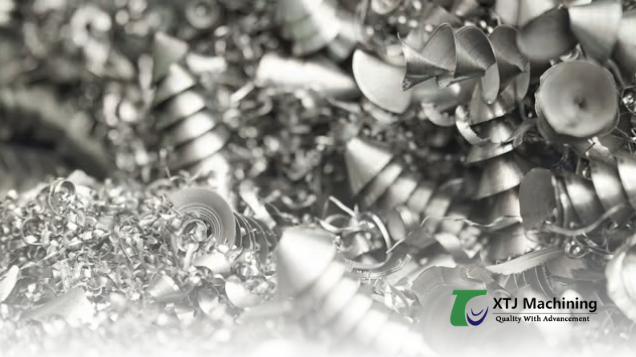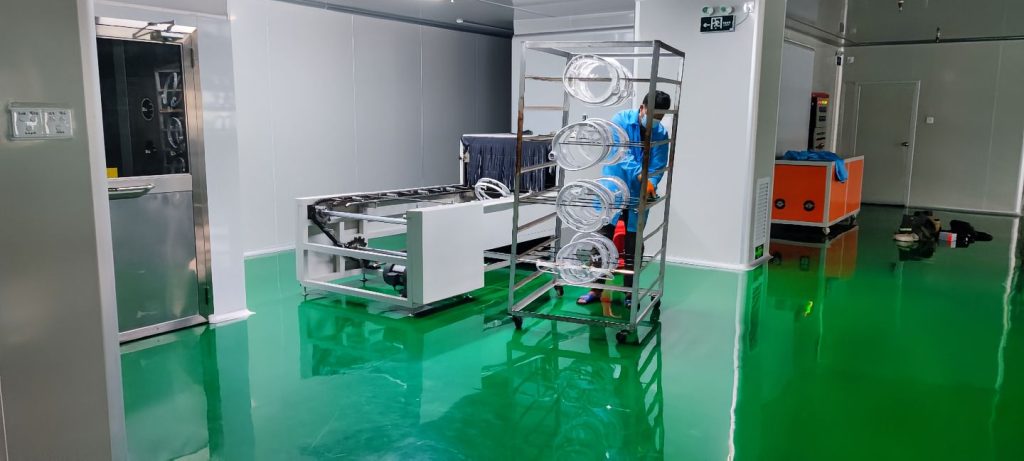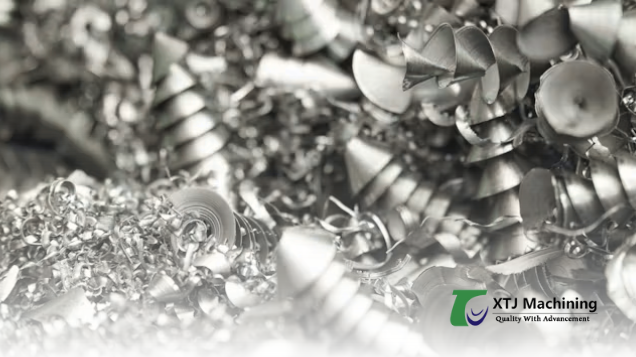Scrap management is the process of handling, sorting, disposing, and recycling of waste products generated in manufacturing processes. Companies get a lot of benefits from adopting this practice, including regulatory compliance, a good company image, a better environmental footprint, cost savings, and more.
its purpose, how it works, and various materials and scrap management strategies.
What Is Scrap Management?
Scrap management involves the handling, processing, and recycling or disposing of scrap materials or by-products generated from manufacturing processes or the disposal of old and used products. This involves monitoring the volume, condition, and economic value of scrap materials, as well as overseeing their proper disposal. The goals of scrap management are to reduce waste, minimize environmental impact, and potentially generate revenue or to save money, at least, by recycling, reusing, or properly disposing of scrap materials. Scrap materials can include a wide range of items, such as metals (e.g., steel, aluminum, copper), plastics, paper, electronics, and construction debris.
What Are the Benefits of Scrap Management?
Scrap management can offer significant benefits and is useful for the following reasons:
1. Cost Reduction
One of the major benefits of scrap is its potential to generate revenue. Businesses can sell excess materials to recyclers or scrapyards, who can sell them to other users who transform them into new items. This reduces waste and enhances sustainability. For instance, construction companies might sell unused steel or concrete, benefiting both financially and environmentally by diverting materials from landfills.
Moreover, scrap offers cost-saving opportunities. Manufacturing entities, for example, can repurpose leftover materials within their production cycles, saving on the purchase of new raw materials, and further promoting environmental sustainability through waste reduction.
2. Resource Optimization
Scrap management promotes the optimal use of resources by ensuring that materials are utilized to their fullest potential. Through recycling and reusing materials, companies can decrease their dependence on virgin resources, leading to a more sustainable use of raw materials. This not only helps in conserving resources but also minimizes the environmental impact associated with resource extraction and processing.
An example of resource optimization is the endless recyclability of metal. The process of obtaining new metals requires extensive mining, which consumes significant resources. Recycling metals offers a major benefit by conserving these resources. Metals, with few exceptions, can be recycled repeatedly without significant loss of quality.
3. Environmental Sustainability
One of the most significant benefits of scrap management is its contribution to environmental sustainability. By recycling and properly disposing of waste materials, companies can reduce their carbon footprint, decrease greenhouse gas emissions, and minimize their overall environmental impact. Efficient scrap management also reduces landfill use, which leaves more space for food garbage and nonrecyclable items. Freeing up space by removing recyclable items from landfills and the environment can prevent soil and water pollution and contribute to the conservation of natural habitats.
4. Compliance With Regulations
With increasing citizen environmental awareness, governments around the world have introduced stringent regulations regarding waste management and recycling. Effective scrap management ensures that companies comply with these regulations, avoiding legal penalties, fines, and potential disruptions to their operations. Compliance also demonstrates a company’s commitment to environmental stewardship, which is becoming required for doing business in many areas.
5. Improved Efficiency
Scrap management can lead to more efficient production processes because it involves the identification, sorting, and systematic handling of waste materials. By streamlining waste handling, companies can reduce clutter, improve workplace safety, and enhance operational efficiency. This not only leads to a more productive work environment but also contributes to better product quality and consistency.
6. Enhanced Reputation
In today’s environmentally conscious market, companies that actively engage in sustainable practices, including effective scrap management, enjoy a competitive advantage. Such companies are viewed more favorably by consumers, investors, and partners, who are increasingly making decisions based on environmental impact. A better reputation can lead to increased customer loyalty, better investment opportunities, and stronger partnerships.

How Does Scrap Management Work?
Scrap management as a process involves the identification, collection, processing, and either the recycling or the disposal of scrap materials. Here’s how the process typically works:
1. Identification
The first step involves identifying materials that can be classified as scrap. This could be offcuts from manufacturing processes, old or defective products, or materials that are no longer needed. This step is crucial to determining the potential for reuse or recycling, or the need for disposal, and it affects the subsequent handling and processing of these materials.
2. Segregation
Once the scrap has been identified, scrap materials need to be segregated based on type and recyclability. Effective segregation is essential for efficient recycling and can significantly impact the value recovered from scrap materials. It involves separating different materials (e.g., metals, plastics, paper) and sorting them into categories to help with processing and prevent contamination.
3. Collection
After segregation, the next step is collecting the scrap materials. This might involve gathering materials from different locations within a facility and centralizing them for further processing.
4. Storage
Once collected, scrap materials need to be stored properly until they are either recycled or disposed of. Proper storage is critical to avoid environmental harm and to preserve the value of the materials. This might involve using designated bins, containers, or areas that protect materials from the elements and prevent contamination.
5. Disposal
Disposal is the process of getting rid of scrap materials that cannot be reused or recycled. This needs to be done in compliance with environmental regulations and standards to minimize the impact on the environment. Disposal methods vary based on the material and may include landfilling, incineration, or specialized treatments for hazardous materials.
6. Documentation
Documentation may include details about the quantities and types of materials collected, stored, recycled, or disposed of, as well as information about costs and revenue. This data is crucial for regulatory compliance, financial analysis, and tracking the effectiveness of the scrap management process.
7. Continuous Improvement
Scrap management is not a static process; it requires ongoing evaluation and improvement. By analyzing data collected during the documentation phase, companies can identify inefficiencies and opportunities for improvement. Examples of continuous improvement efforts can include focusing on reducing scrap generation, increasing recycling rates, or finding more cost-effective disposal methods.
How To Reduce Scrap
The primary way of effectively reducing scrap in manufacturing is by optimizing product design and manufacturing processes. Product design can be optimized to minimize material usage. This can be done by designing a product to use less material, or by designing it to use a manufacturing method that does not produce large amounts of waste.
Optimizing manufacturing processes involves a variety of methods to minimize the amount of material waste that occurs in manufacturing. Using automated tools such as CNC (computer numerically controlled) machines may reduce the amount of error, meaning the production of parts that are wrong. This minimizes the amount of required rework and the amount of material to be scrapped. Rigorous quality control methods and employee training can help minimize the production of defective parts, further reducing the amount of rework needed. Monitoring, analyzing, and auditing the manufacturing process can help identify potential areas of material waste, where the amount of scrap can be reduced.
What Are the Benefits of Scrap Management?
The benefits of scrap management are as follows:
Lowers costs related to waste disposal and raw materials procurement by transforming waste into a revenue source through the sale of recyclable scrap.
Maximizes resource use, minimizes waste, and reduces the need for new materials, contributing to more sustainable consumption patterns.
Decreases pollution, conserves natural resources, and diverts waste from landfills, minimizing the demand for virgin materials.
Ensures adherence to local, national, and international waste disposal and recycling regulations. This can help with avoiding fines and legal issues.
Enhances reputation among consumers, investors, and other stakeholders, leading to increased market competitiveness and customer loyalty.
What Are the Possible Challenges When It Comes to Scrap Management?
Although there are a lot of benefits associated with scrap management, there are also some challenges. Some of the challenges include:
XTJ is a leading OEM Manufacturer that is dedicated to providing one-stop manufacturing solutions from prototype to production. We are proud to be an ISO 9001 certified system quality management company and we are determined to create value in every customer relationship. We do that through collaboration, innovation, process improvements, and exceptional workmanship.
Setting up a scrap management system may involve a substantial initial investment in facilities, equipment, and technology for collecting, sorting, recycling, and disposing of scrap materials.
Separating and sorting different types of scrap materials can be complex and labor-intensive.
If scrap materials are not stored or disposed of properly, they can pose a safety risk for either employees or the environment.
The market prices for recyclable materials can vary widely, affecting the economic feasibility of recycling programs and the potential revenue from selling scrap.
Storing scrap materials until they can be processed or sold requires room, which can be a significant constraint for businesses with limited space.
What Are the Different Types of Scrap?
Scrap materials can be categorized based on their composition and potential for recycling or reuse. Here are the main types of scrap:
1. Metal Scrap
Metal scrap includes ferrous and nonferrous metals. This type of scrap is commonly found in the automotive industry, construction industry, and metal manufacturing industry. Metal scrap comes in many forms, such as automotive components, metal manufacturing waste, old beams, rebar, and metal offcuts. Metal can be recycled numerous times without degrading its properties. This makes it a highly valuable scrap. However, it’s important to note that highly alloyed materials are a lot more difficult to recycle.
To learn more, see our full guide on Metal Scrap.
2. Organic Waste
Organic waste includes biodegradable materials such as food waste, wood, lawn clippings, garden waste, and animal droppings. Most organic waste can be composted. The nutrient-rich compost can then be used in agriculture and gardening, acting as an effective recycling method. Organic waste is typically found in the food industry, landscaping industry, woodworking and furniture manufacturing industries, forestry industry, and concentrated animal feeding operations (CAFOs).
3. Glass Scrap
Glass scrap consists of all types of glass panes, bottles, and containers, whether they are used or unused. Glass can be recycled endlessly without any loss in quality. The recycling process uses less energy than producing new glass, making recycling glass an extremely sustainable option. Glass scrap is typically found in the food and beverage industry, as well as in the construction industry.
XTJ is a leading OEM Manufacturer that is dedicated to providing one-stop manufacturing solutions from prototype to production. We are proud to be an ISO 9001 certified system quality management company and we are determined to create value in every customer relationship. We do that through collaboration, innovation, process improvements, and exceptional workmanship.
4. Plastic Scrap
Plastic scrap consists of many types of polymers, including PET (polyethylene terephthalate), HDPE (high-density polyethylene), PVC (polyvinyl chloride), ABS (acrylonitrile butadiene styrene), and others. This type of scrap is found in most industries, including the consumer goods, automotive, manufacturing, and packaging industries. There are some plastics that are difficult to recycle or that are not recyclable, such as polystyrene and polycarbonate.
To learn more, see our full guide on Plastic Scrap.
5. Rubber Scrap
Rubber scrap typically consists of used tires and industrial rubber products. These can be found in the automotive industry and industrial manufacturing industries. Rubber can be recycled into new rubber products, or repurposed as asphalt additives, playground surfaces, and more.
To learn more, see our full guide on Rubber Scrap.
6. Textile Scrap
Textile scrap includes fabric offcuts, discarded clothing, damaged upholstery from furniture, and other textile goods. Textile scrap is typically found in the clothing and furniture industries. Recycling textile scrap mainly involves repurposing textiles or processing the materials into new products.
7. Electronic Scrap (E-Waste)
Electronic scrap, or e-waste, comprises discarded electronics, including computers, phones, TV’s, and household appliances. E-waste contains valuable metals and materials, such as gold, silver, and copper, which can be recycled efficiently. It also contains hazardous materials. Proper recycling methods are required to recover valuable materials while preventing environmental contamination.
8. Paper and Cardboard Scrap
This category includes used papers, books, cardboard boxes, and packaging materials. Paper scrap is typically found in the newspaper industry, book, and packaging industries. Paper and cardboard can be effectively recycled several times. Recycling this scrap helps conserve water and trees.
To learn more, see our full guide on Paper and Cardboard Scrap.

What Are the Different Scrap Management Strategies?
There are several strategies that companies can make use of to manage their scrap effectively. Some examples are listed below:
Refuse: “Refusing” is about not generating waste in the first place. For businesses, this translates to adopting procurement strategies that avoid receiving materials known for being difficult to recycle or repurpose. Choosing suppliers that offer minimal to no packaging or opting for returnable and reusable containers can significantly cut down on the volume of scrap generated. This proactive approach not only reduces waste but also encourages suppliers to consider more sustainable packaging and product delivery options.
Reduce: “Reducing” focuses on minimizing the overall amount of waste produced. In a business setting, this can involve strategies like optimizing product designs to use less material or selecting materials that are easier to recycle or have a lower environmental impact. For instance, reducing the thickness of the plastic used in packaging without compromising the product’s integrity can significantly decrease the amount of plastic waste downstream, in the consumer recycling stream. Implementing efficient manufacturing processes that minimize offcuts and scrap material also plays a crucial role in this step.
Reuse: “Reusing” involves finding new purposes for items that might otherwise be considered waste. This could mean reusing scrap material in-house for other projects or processes in industrial settings. For example, metal scraps from one process could be melted down and reused in another, or waste paper from offices can be reused for note-taking before recycling. Encouraging the reuse of materials not only reduces the need for new raw materials but also cuts down on the waste produced and the cost. This includes raw material costs, waste management and disposal costs, production and manufacturing costs, environmental compliance costs, and procurement and logistics costs.
Repurpose (Upcycle): “Repurposing,” or upcycling, takes materials that are no longer suitable for their original purpose and transforms them into something of higher value. This strategy requires a bit more creativity and innovation. For example, a manufacturing business could take defective products or remnants and transform them into new products, such as using fabric scraps to create accessories or decorative items. This approach not only reduces waste but can also generate additional revenue streams.
Recycle: Recycling acts as the last line of defense against waste going to a landfill. Recycling involves separating materials to ensure they are processed correctly. Businesses can benefit from establishing recycling programs that manage not just common recyclables like paper and plastics, but also more challenging materials such as electronics and hazardous waste. The goal is to ensure that as much material as possible is recovered and re-enters the manufacturing cycle, reducing the demand for virgin materials and the environmental impact associated with their extraction and processing.
What Industries Use Scrap Management?
Manufacturing industries are one of the largest producers of scrap. These industries include: the automotive, electronics, machinery, paper and packaging, energy, and utilities sectors, as well as equipment manufacturing. These industries implement scrap management to reduce production costs and environmental impact. This involves recycling metals, plastics, and other materials, as well as reusing parts when possible. For example, the construction and demolition sectors generate significant amounts of scrap material, including: metal, wood, concrete, and bricks. Scrap management strategies help in recycling materials, reducing landfill waste, and saving on material costs by reusing resources in new construction projects, where possible.
Industries involved in metalworking and part fabrication produce scrap metals like steel, aluminum, copper, and brass. Scrap metal recycling helps with the conservation of resources, cost savings, reduction in energy consumption, and lowering greenhouse gas emissions. It also frees up space in landfills. The electronics industry, particularly through e-waste recycling, manages scrap components such as metals, plastics, and rare earth elements. This helps in recovering valuable materials and reducing the environmental footprint of electronic goods.
How Do Tool and Equipment Maintenance Affect Scrap and Production Efficiency?
Tool and equipment maintenance directly affect scrap and production efficiency by:
Reducing Scrap: Good maintenance ensures that industrial machinery operates with the required precision and accuracy, decreasing the likelihood of producing defective products that result in scrap.
Increasing Production Efficiency: Equipment downtime is minimized through regular inspections and repairs, keeping production lines running smoothly and efficiently. This means that you don’t end up with tooling crashes, or making hundreds of out-of-spec parts that have to be thrown away.
Improving Product Quality: Well-maintained equipment produces consistent, high-quality products, reducing the need for rework or disposal of substandard items.
Saving Costs: Good maintenance practices prevent costly equipment breakdowns and extend the lifespan of machinery, reducing the need for expensive replacements and repairs.
Is Scrap Management Essential in Manufacturing?
Yes, scrap management is essential in manufacturing, because it helps reduce costs, enhances operational efficiency, and promotes environmental sustainability. By managing scrap, manufacturers can recycle and reuse materials, significantly lowering the demand for new raw materials and reducing waste. This helps lower production costs and minimize the environmental impact of manufacturing processes.
XTJ is a leading OEM Manufacturer that is dedicated to providing one-stop manufacturing solutions from prototype to production. We are proud to be an ISO 9001 certified system quality management company and we are determined to create value in every customer relationship. We do that through collaboration, innovation, process improvements, and exceptional workmanship.





